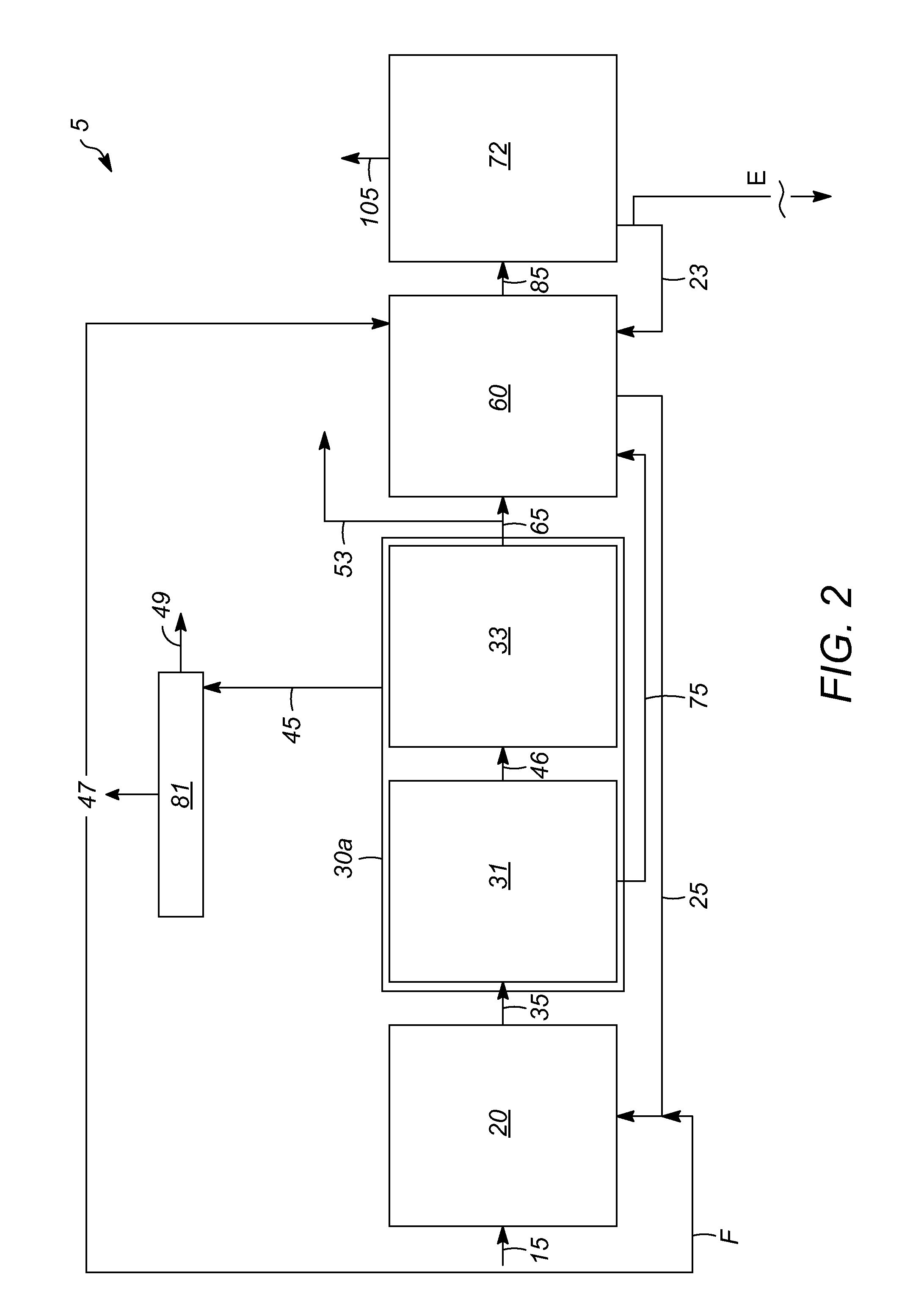Char-handling processes in a pyrolysis system
a pyrolysis system and char-handling technology, applied in the direction of combustible gas purification/modification, lighting and heating apparatus, combustion types, etc., can solve the disadvantage of pyrolysis biomass, large quantities of excess dilution air or the addition of expensive cooling systems,
- Summary
- Abstract
- Description
- Claims
- Application Information
AI Technical Summary
Benefits of technology
Problems solved by technology
Method used
Image
Examples
Embodiment Construction
[0019]The following detailed description of the invention is merely exemplary in nature and is not intended to limit the invention or the application and uses of the invention. Furthermore, there is no intention to be bound by any theory presented in the preceding background of the invention or the following detailed description of the invention.
[0020]Various exemplary embodiments of the present invention are directed to processes for handling combustible solids (hereinafter “combustible solids” or “char” produced during pyrolysis of carbonaceous biomass feedstock). Char is segregated from a heat transfer medium to control afterburn in a reheater during regeneration of the heat transfer medium. A portion of the segregated char may be exported to control the overall heat balance and accumulation of ash in the pyrolysis system.
[0021]FIG. 1 is a flow chart of a char-handling process 10, in accordance with an exemplary embodiment of the present invention. FIG. 2 illustrates a pyrolysis ...
PUM
 Login to View More
Login to View More Abstract
Description
Claims
Application Information
 Login to View More
Login to View More - R&D
- Intellectual Property
- Life Sciences
- Materials
- Tech Scout
- Unparalleled Data Quality
- Higher Quality Content
- 60% Fewer Hallucinations
Browse by: Latest US Patents, China's latest patents, Technical Efficacy Thesaurus, Application Domain, Technology Topic, Popular Technical Reports.
© 2025 PatSnap. All rights reserved.Legal|Privacy policy|Modern Slavery Act Transparency Statement|Sitemap|About US| Contact US: help@patsnap.com



